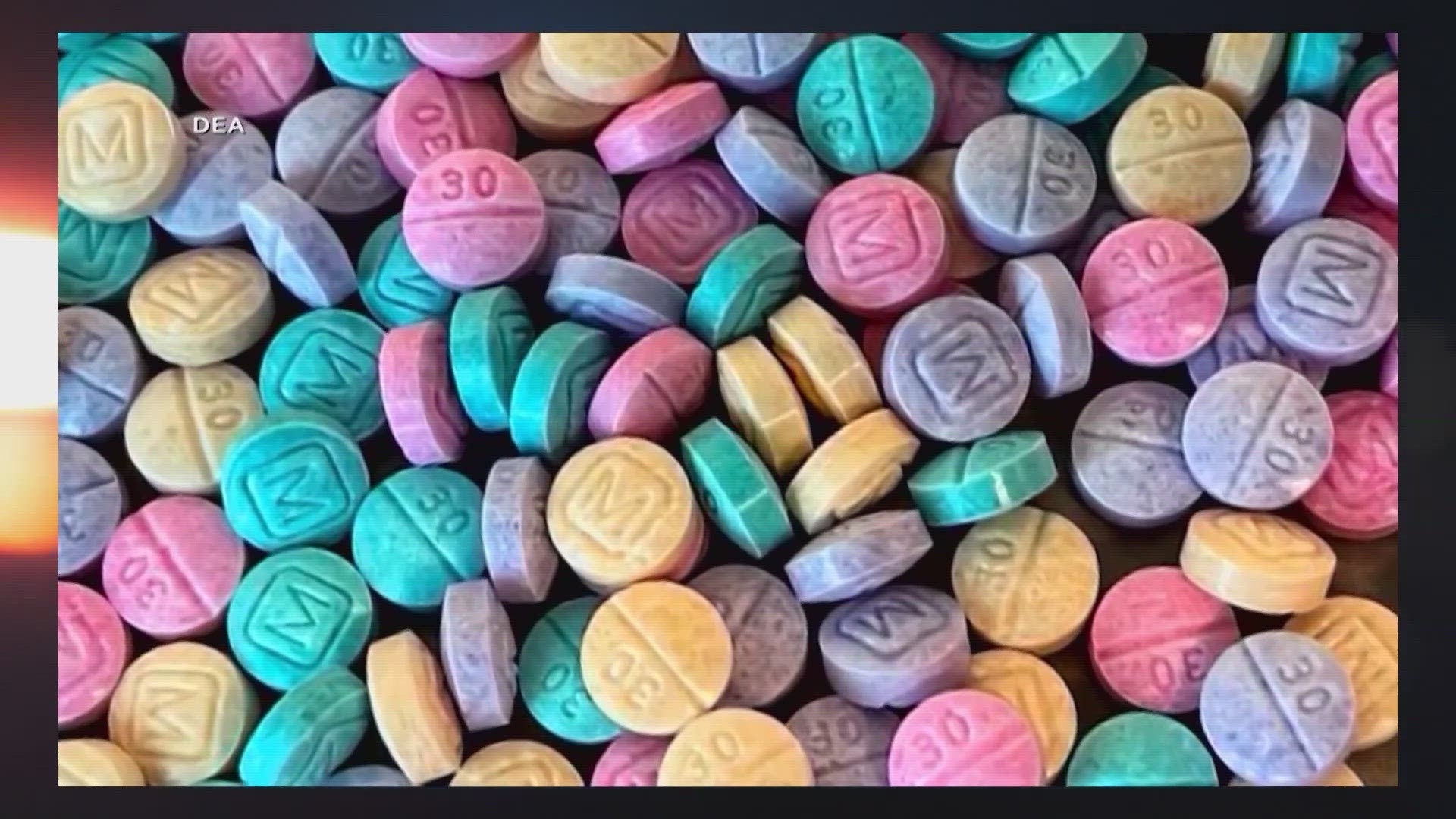SAN ANTONIO — A shooting at Market Square and alcohol-related issues are not the only trouble flowing from Fiesta. Federal drug agents believe fentanyl is a potential issue too.
Before San Antonians could get out of their beds on the first of Fiesta, there was trouble.
Bexar County emergency crews responded to a call for a 24-year-old man who was reportedly unresponsive due to a fentanyl overdose.
"He's not responding---not breathing," a dispatcher said.
The call played on scanners in the KENS 5 newsroom before 5:30 am. Our overnight photographer went to the scene at 11440 Potranco Rd near a firework stand where responders avoided him.
But an unidentified person at the scene claiming to be a friend of the alleged overdose victim said the drug mix was ice laced with "something"---possibly fentanyl.
"Some people use it to lessen some of the effects of ice or the methamphetamine---that would be the fentanyl or the heroin piece," Dr. Ralph Riviello said. "Then the meth kind of counteracts some of the effects of the heroin or fentanyl."
Riviello is the chair of Emergency Medicine in UT Health San Antonio's Department of Emergency Medicine and the Director of Emergency Medicine at University Hospital.
He said fentanyl is not one of his emergency room's unique factors during Fiesta. According to Riviello, his staff deals with more alcohol-related issues like accident victims, alcohol poisoning, falls, fights, and injuries from drinking too much. But drug issues still come through the ER.
"When you get large crowds of people together, and they're celebrating and having a good time, you know, drugs and alcohol-- for some---are part of that celebration," he said.
Rieviello said emergency responders equipped with Naloxone, more commonly called Narcan prevent most victims from coming to the emergency room.
"Opioid overdose interventions are always carried on our apparatus," Joe Arrington said.
Arrington, a San Antonio Fire Department Public Information Officer, said that has included EMS bike patrols and other units in service carrying the antidote for Fiesta events.
"Heroin overdoses have long been an issue we have responded to in San Antonio," Arrington said. "So treating suspected opioid overdoses is not new to our medics."
Treating overdose is one thing, and stopping the drugs from getting into San Antonio is another challenge.
Brian O'Neil is a Special Agent Group Supervisor with the Drug Enforcement Administration. San Antonio's office is under the DEA's Houston Division.
"These precursors originate in China. They get shipped to Mexico," O'Neil said. "These Mexican Cartels create fake prescription pills and lace it with fentanyl."
According to O'Neil, they believe the cartels won't miss out on Fiesta's large crowds but have no evidence the organizations are dealing.
"These drug traffickers---all they're here to do is make money," he said.
He said the DEA is still doing all it can to stop the spread of fentanyl because no age group is out of bounds for the criminal organizations; he said---even children.
"Fentanyl is the most deadly drug that the United States has ever dealt with," O'Neil said.
The drug agent said the deadly drug helps cartels cut production costs and amplifies the high of any narcotic. But the risk is fatal because the measurements are always flawed, and two milligrams, roughly the weight of a mosquito, is considered lethal.
Riviello agrees it's like playing Russian roulette with a bullet in every chamber.
"The supply chain isn't always pure," he said. "The supply chain isn't always honest about what you're getting."
The Bexar County Sheriff's Office said the drug overdose victim got taken to a San Antonio hospital. They describe him as responsive. Inquiries about his condition and the call to Bexar County Fire District #2 went unanswered.
The DEA said the Houston district seized 750,000 fake pills and 230 pounds of powdered fentanyl last year. O'Neil said that amounts to 7 million lethal doses off the street.

